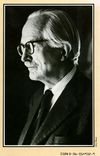Ring of Terror: Difference between revisions
imported>Hayford Peirce (New article generated using Special:MetadataForm) |
imported>Hayford Peirce (began a new article, will remove material brought in from another to use as a template) |
||
| Line 1: | Line 1: | ||
{{subpages}} | {{subpages}} | ||
{{TOC|right}} | |||
{{Image|Michael Gilbert Portrait - smaller.jpg|left|100px|Michael Gilbert on the back cover of [[Mr. Calder and Mr. Behrens]], 1982}} | |||
'''Ring''' is a mystery novel by the British crime writer [[Michael Gilbert]], first published in the United Kingdom in 1995 by [[Hodder and Stoughton]] and in the United States by [[Carroll & Graf]]. It was Gilbert's 28th novel and the first of three featuring his final set of recurring characters, [[Luke Pagan and Joe Narrabone]]. Nor is it set in Gilbert's usual locales of London, the English countryside, or France. Instead, while it has many of the elements of the classic detective story, it is also a gripping novel of mounting suspense that takes place in a 1943 prisoner of war camp for British officers in northern Italy—it was the first of Gilbert's numerous later works that would feature suspense and danger as much or more as elements of detection. Gilbert himself had been a British officer during the war, was captured, and interned in an Italian camp. He escaped and spent several months making his way through the Italian countryside trying to reach the British lines. Much of this book apparently reflects his own experiences. It was the basis of a 1959 British film, [[Danger Within|'''Danger Within''']] ('''Breakout''' in the United States), that closely followed the events in the book. [[H.R.F. Keating]], who wrote Gilbert's obituary for [[The Guardian]], said that "Gilbert's time as a PoW prompted Death In Captivity (1952), surely the only whodunnit set in a prisoner-of-war camp."<ref> [[The Guardian|''The Guardian'']], 10 February 2006 at [https://www.theguardian.com/news/2006/feb/10/guardianobituaries.booksobituaries]</ref> | |||
==Plot== | |||
==Appraisal== | |||
An appraisal some years after its publication comes from [[Jacques Barzun|Barzun]] and Taylor's encyclopedic ''[[A Catalogue of Crime|Catalogue of Crime]]'':<blockquote>A superb, though harrowing, story of murder in a prisoner-of-war camp in northern Italy towards the end of the last world war. The skill with which suspense is kept up during a series of trivial incidents related to oppression and plans of escape is equaled only by the management of a large number of characters, Italian and English.<ref>[[Jacques Barzun]] & Wendell Hertig Taylor, ''A Catalogue of Crime'',[[Harper & Row]], New York, "Second Impression Corrected", 1973, page 208</ref></blockquote> | |||
== Notes == | |||
<references/> | |||
Revision as of 16:36, 5 February 2017
Ring is a mystery novel by the British crime writer Michael Gilbert, first published in the United Kingdom in 1995 by Hodder and Stoughton and in the United States by Carroll & Graf. It was Gilbert's 28th novel and the first of three featuring his final set of recurring characters, Luke Pagan and Joe Narrabone. Nor is it set in Gilbert's usual locales of London, the English countryside, or France. Instead, while it has many of the elements of the classic detective story, it is also a gripping novel of mounting suspense that takes place in a 1943 prisoner of war camp for British officers in northern Italy—it was the first of Gilbert's numerous later works that would feature suspense and danger as much or more as elements of detection. Gilbert himself had been a British officer during the war, was captured, and interned in an Italian camp. He escaped and spent several months making his way through the Italian countryside trying to reach the British lines. Much of this book apparently reflects his own experiences. It was the basis of a 1959 British film, Danger Within (Breakout in the United States), that closely followed the events in the book. H.R.F. Keating, who wrote Gilbert's obituary for The Guardian, said that "Gilbert's time as a PoW prompted Death In Captivity (1952), surely the only whodunnit set in a prisoner-of-war camp."[1]
Plot
Appraisal
An appraisal some years after its publication comes from Barzun and Taylor's encyclopedic Catalogue of Crime:
A superb, though harrowing, story of murder in a prisoner-of-war camp in northern Italy towards the end of the last world war. The skill with which suspense is kept up during a series of trivial incidents related to oppression and plans of escape is equaled only by the management of a large number of characters, Italian and English.[2]
Notes
- ↑ The Guardian, 10 February 2006 at [1]
- ↑ Jacques Barzun & Wendell Hertig Taylor, A Catalogue of Crime,Harper & Row, New York, "Second Impression Corrected", 1973, page 208
